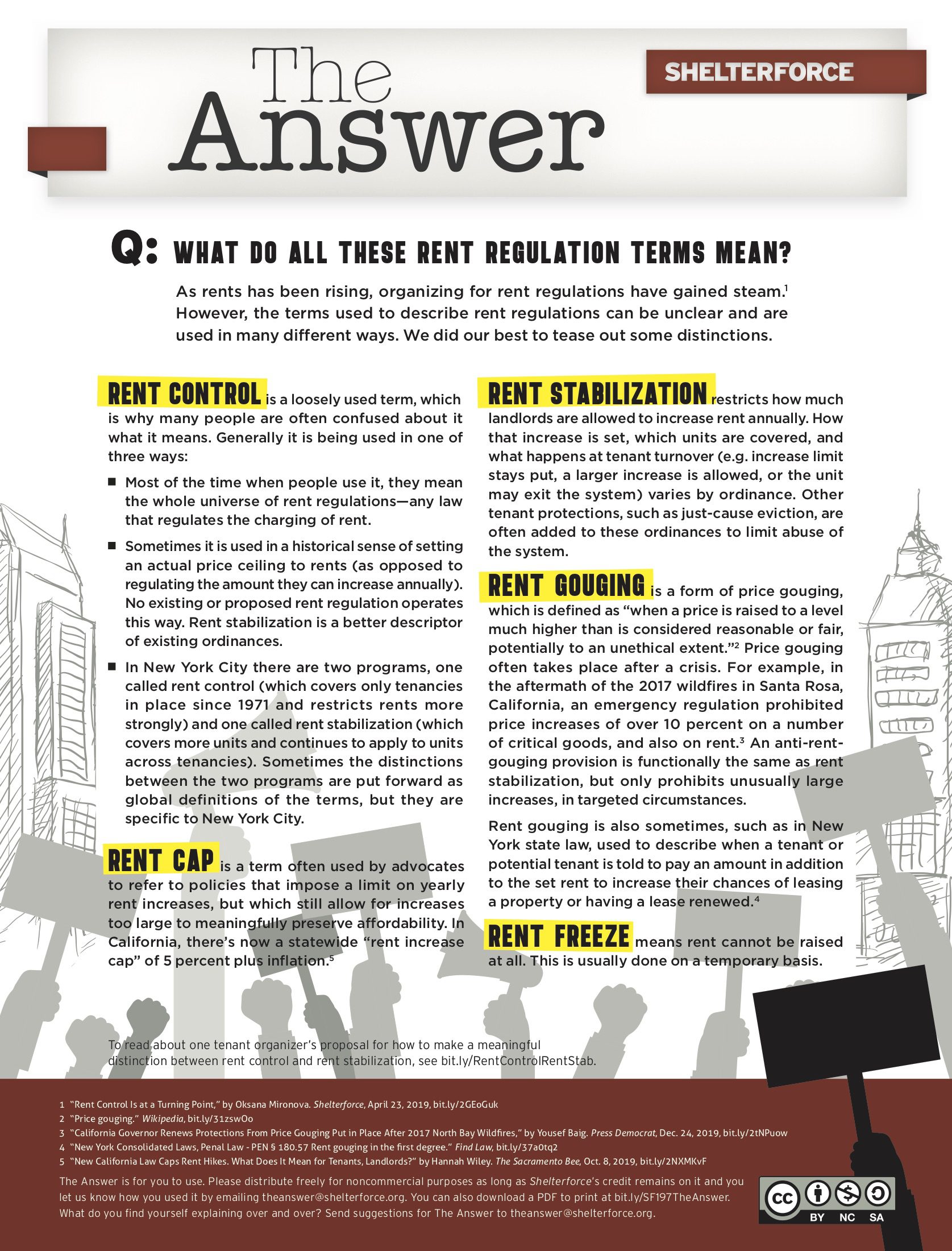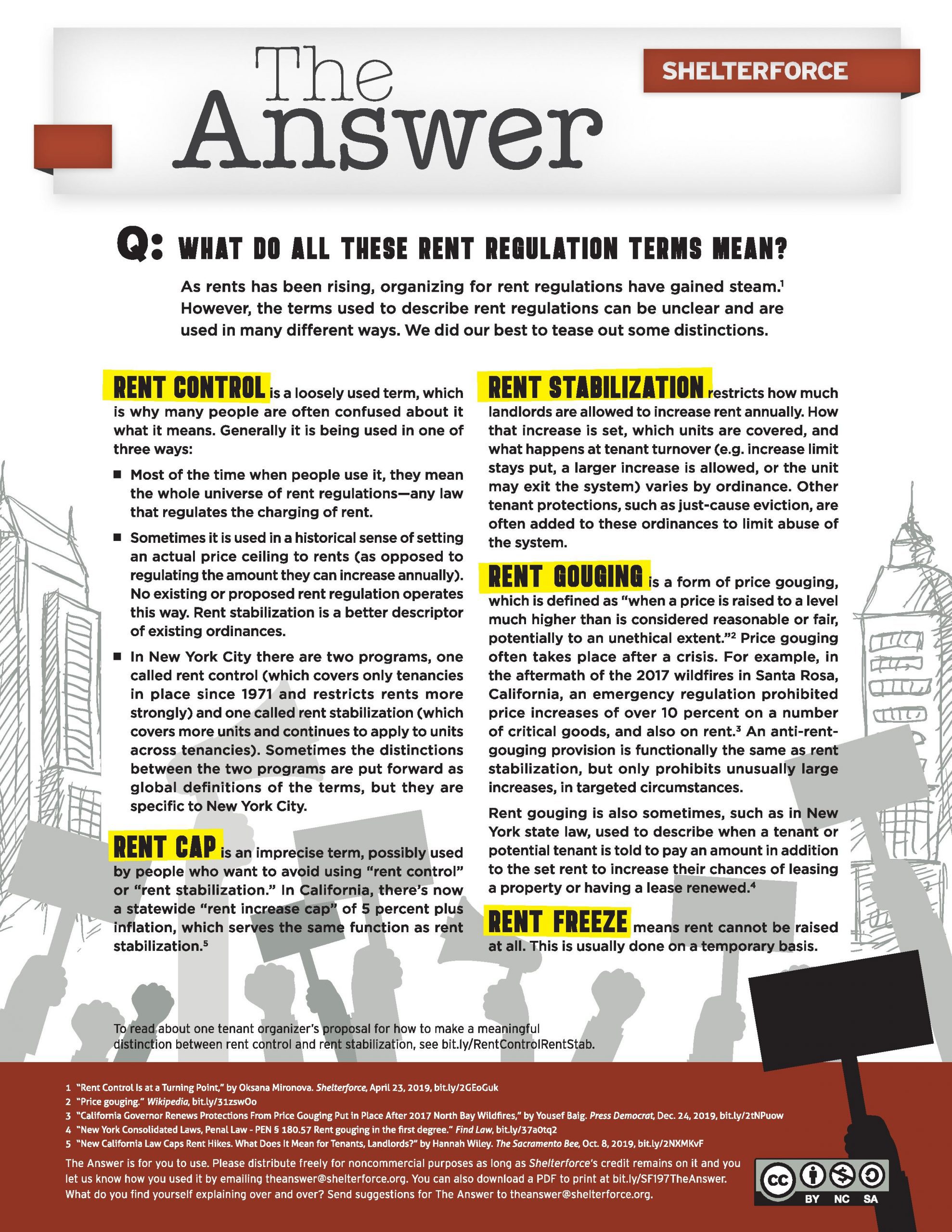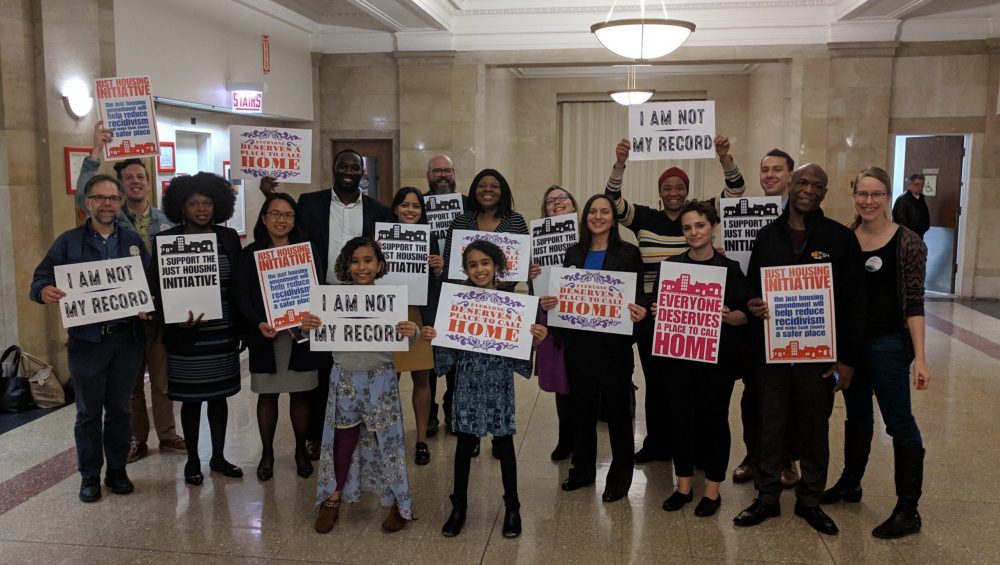
Rent control is a loosely used term, which is why many people are often confused about it what it means. Generally it is being used in one of three ways:
- Most of the time when people use it, they mean the whole universe of rent regulations—any law that regulates the charging of rent.
- Sometimes it is used in a historical sense of setting an actual price ceiling to rents (as opposed to regulating the amount they can increase annually). No existing or proposed rent regulation operates this way. Rent stabilization is a better descriptor of existing ordinances.
- In New York City there are two programs, one called rent control (which covers only tenancies in place since 1971 and restricts rents strongly) and one called rent stabilization (which covers more units and continues to apply to units across tenancies). Sometimes the distinctions between the two programs are put forward as global definitions of the terms, but they are specific to New York City.
Rent stabilization restricts how much landlords are allowed to increase rent annually. How that increase is set, which units are covered, and what happens at tenant turnover (e.g. increase limit stays put, a larger increase is allowed, or the unit may exit the system) varies by ordinance. Other tenant protections, such as just-cause eviction, are often added to these ordinances to limit abuse of the system.
Rent gouging is a form of price gouging, which is defined as “when a price is raised to a level much higher than is considered reasonable or fair, potentially to an unethical extent.” Price gouging often takes place after a crisis. For example, in the aftermath of the 2017 wildfires in Santa Rosa, California, an emergency regulation prohibited price increases of over 10 percent on a number of critical goods, and also on rent. An anti-rent-gouging provision is functionally the same as rent stabilization, but only prohibits unusually large increases, in targeted circumstances.
Rent gouging is also sometimes, such as in New York state law, used to describe when a tenant or potential tenant is told to pay an amount in addition to the set rent to increase their chances of leasing a property or having a lease renewed.
Rent freeze means rent cannot be raised at all. This is usually done on a temporary basis.
Rent capis a term often used by advocates to refer to policies that impose a limit on yearly rent increases, but which still allow for increases too large to meaningfully preserve affordability. In California, there’s now a statewide “rent increase cap” of 5 percent plus inflation, which serves the same effect as rent stabilization.
Read about one tenant organizer’s proposal for how to make a meaningful distinction between rent control and rent stabilization.
This article appears in the Winter 2020 edition of Shelterforce magazine. The online version was updated on April 8, 2020, to clarify the way in which advocates use the term “rent cap.”






Comments